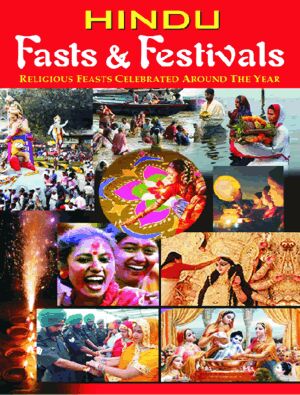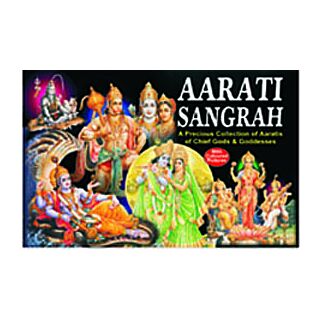Hindu Fasts & Festivals by Manoj Publications
Rs 150.00
Out of stock
SKU
DASMP6252
Quick Overview
Festivals (feriae) were an important part of Roman religious life during both the Republican and Imperial eras, and were one of the primary features of the Roman calendar. Feriae ("holidays" in the sense of "holy days") were either public (publicae) or private (privatae). State holidays were celebrated by the Roman people and received public funding. Feriae privatae were holidays celebrated in honor of private individuals or by families.
Related Products
Shreemad Bhagwad Geeta - Hindi with translation in English by Manoj Publications (Hardback)
Special Price Rs 208.00 17% off Rs 250.00
Out of stock
A Commentary on Yog Vashishtha by Manoj Publications
Special Price Rs 168.00 16% off Rs 200.00
Out of stock
Shrimada Bhagavata Purana by Manoj Publications
Special Price Rs 168.00 16% off Rs 200.00
Out of stock
‹
›
- The 1st-century BC scholar Varro defined feriae as "days instituted for the sake of the gods."[2] A deity's festival often marked the anniversary (dies natalis, "birthday") of the founding of the deity's temple, or a rededication after a major renovation.[3] Public business was suspended for the performance of religious rites on the feriae. Cicero says that people who were free should not engage in lawsuits and quarrels, and slaves should get a break from their labors
- .[4] On calendars of the Republic and early Empire, the religious status of days were marked by letters such as F (for fastus, when it was religiously permissible to conduct legal business), C (for comitialis), a day on which the Roman people could hold assemblies), and N (for nefastus, when political activities and the administration of justice were prohibited). By the late 2nd century AD, extant calendars no longer show these letters, probably as a result of calendar reforms undertaken by Marcus Aurelius that recognized the changed religious environment of the empire.
- On surviving Roman calendars, festivals that appear in large capital letters (such as the Lupercalia and Parilia) are thought to have been the most ancient holidays, becoming part of the calendar before 509 BC.[6] Some of the oldest festivals are not named for deities.[7] During the Imperial period, several traditional festivals localized at Rome became less important, and the birthdays and anniversaries of the emperor and his family gained prominence as Roman holidays. Games (ludi), such as the Ludi Apollinares, were often dedicated to particular deities, but were not technically feriae, although they might be holidays in the modern sense of days off work (dies festi).
- After the mid-1st century AD, there were more frequent spectacles and games (circenses) held in the venue called a "circus", in honor of various deities or for imperial anniversaries (dies Augusti). A religious festival held on a single day, such as the Floralia, might be expanded with games over multiple days (Ludi Florae); the festival of Flora is seen as a precursor of May Day festivities.
- [8] A major source for Roman holidays is Ovid's Fasti, a poem that describes and provides origins for festivals from January to June at the time of Augustus. Because it ends with June, less is known about Roman festivals in the second half of the year, with the exception of the Saturnalia, a religious festival in honor of Saturn on December 17 that expanded with celebrations through December 23. Probably the best-known Roman festival, some of its customs, such as gift-giving and the prevalence of candles, are thought to have influenced popular celebrations of Christmas
More view
| Product Name | Hindu Fasts & Festivals by Manoj Publications |
|---|---|
| ISBN / Product Code | 9788131006252 |
| Binding | Paperback |
| Publisher | Manoj Publications |
| General Books | Religion & Spirituality |
| Devotional & Spiritual Books | Festivals |
| HSN Code | 4901 |
| Company Details | Published by Manoj Publication.. Address 761, Main Road, Burari, Delhi - 110084, INDIA . In case of any queries regarding products please call at 9868112194, or Email :- info@manojpublications.com |
Write Your Own Review
We found other products you might like!
‹
›






